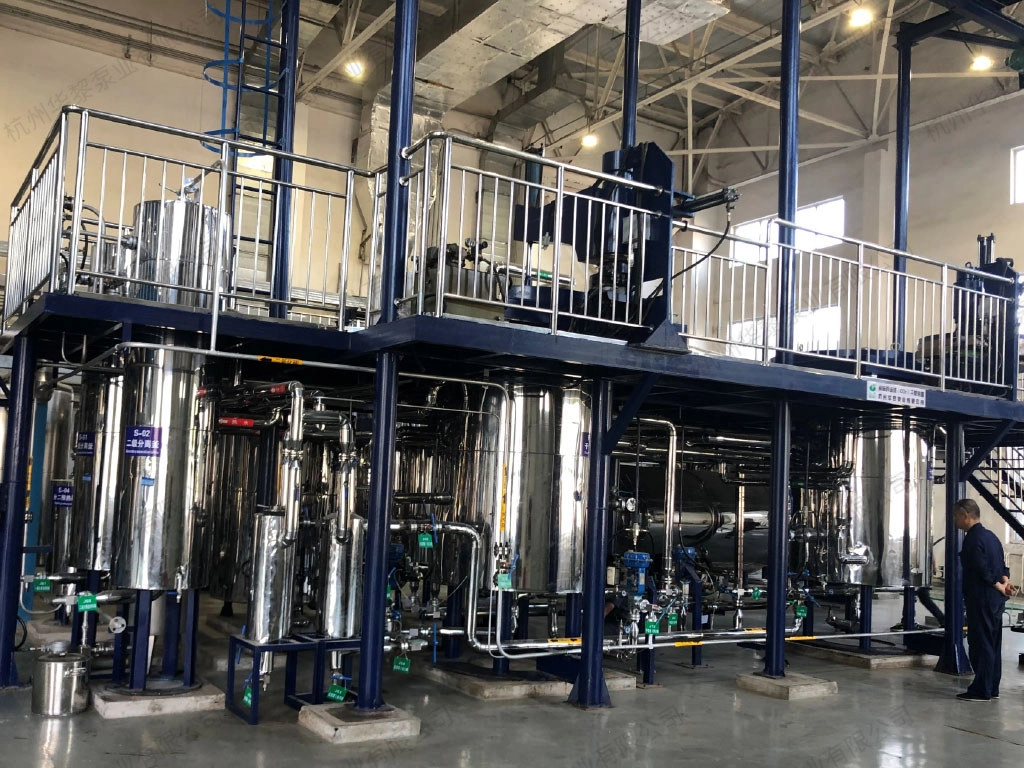In 2023, Tobacco Journal International reported that the world's top five tobacco companies were forced to recall products due to excessive solvent residues, resulting in losses exceeding USD 230 million. In 2024, following the FDA’s update of the benzopyrene limit in e-cigarette paste to 0.1 ppb, a processing revolution led by CO₂ supercritical extraction technology is rapidly gaining momentum.
What is CO₂Supercritical Fluid Extraction (SFE)?
Supercritical fluid extraction (SFE) is an advanced separation technology that typically uses carbon dioxide (CO₂) as the solvent. CO₂ becomes supercritical when heated and pressurized beyond its critical point (31°C and 74 bar), acquiring properties of both a gas and a liquid. This allows it to dissolve and extract specific compounds efficiently.
By adjusting temperature and pressure, manufacturers can selectively extract desired compounds while preserving heat-sensitive active ingredients, resulting in higher product purity and better flavor retention.
Traditional Ethanol Extraction vs. CO₂ Supercritical Extraction: A Detailed Comparison
|
Feature |
Traditional Ethanol Extraction |
CO₂Supercritical Extraction |
|
Solvent Residue |
Up to 5000 ppm |
Virtually zero (CO₂evaporates naturally) |
|
Aroma Loss |
40% loss due to high-temperature processing |
Retains up to 89% of volatile flavors |
|
Heavy Metal Content |
1.2 ppm |
Reduced to 0.6 ppm |
Traditional Ethanol Extraction Process
Tobacco grinding → Ethanol soaking (60°C, 4 hours) → Distillation and solvent recovery → Concentrated extract
Advantages:
- Simple, easy-to-operate process
- Low technical barrier to entry
Disadvantages:
- Ethanol's boiling point (78°C) causes the loss of volatile aroma compounds (e.g., 38% β-damascenone loss)
- Incomplete distillation leaves residual solvents (e.g., GC-MS shows 3200 ppm acetone)
CO₂ Supercritical Extraction Process
Tobacco pretreatment → CO₂ pressurization to 250 bar → Stepwise extraction (wax removal → nicotine concentration → aroma preservation) → Depressurization and separation

Advantages:
- Selective Extraction: By adjusting pressure, specific components (e.g., nicotine at 200 bar) can be selectively targeted while avoiding undesired compounds like chlorophyll
- Self-Cleaning System: CO₂ is fully recyclable, eliminating cross-contamination risks
Disadvantages:
- Requires high initial investment in specialized equipment
- Demands strict control of environmental conditions
Extraction Effect Comparison
|
Index |
Ethanol extraction method |
CO₂ extraction method |
difference |
|
Nicotine Purity |
95.2% |
99.8% |
↑4.6% |
|
Solanesol Retention rate |
12% |
67% |
↑55% |
|
Benzopyrene Content |
0.25ppb |
<0.05ppb |
↓80% |
Three Key Mechanisms Driving CO₂ Extraction Purity
Dynamic Pressure Regulation: “Molecular Scissors” for Precision Separation
Impurity Removal (100 bar, 35°C):
At low pressure, CO₂ dissolves waxes and long-chain fatty acids (molecular weight >500 Da), while nicotine solubility remains just 12%. These waxes are collected in a primary separation vessel and can be repurposed in cosmetics. This stage improves penetration efficiency by 60% for the next phase.
Nicotine Extraction (250 bar):
As pressure increases, CO₂’s density reaches 0.85 g/cm³, significantly enhancing its affinity for nicotine (MW: 162.23 Da). Using a honeycomb filter in the secondary separation vessel, extraction efficiency reaches 98.7%, while heavy metals (like lead and cadmium) are filtered out with >90% retention.
Aroma Preservation (300 bar, 40°C):
Terpenes such as β-damascenone form "molecular cages" under supercritical conditions. A gradual decompression strategy in the tertiary vessel enables slow release and high retention, boosting aroma preservation from 62% to over 85%.
Subcritical water synergistic process
This innovative hybrid method enhances extraction results through precise thermodynamic control.
How it works:
At 150°C and 50 bar, water enters a subcritical state—its dielectric constant drops from 80 to 20—transforming it into a green polar solvent.This enables:
- Pesticide Breakdown: Dechlorinates DDT molecules with up to 99.5% efficiency
- Nicotine Salt Hydrolysis: Converts nicotine salts to 99.8% pure free base form
pH Stabilization:
Unlike traditional acid washing (e.g., hydrochloric acid) which causes wide pH fluctuations (3.5–8.0), the subcritical water method self-balances to a pH of 6.2 ± 0.3 using in-situ generated organic acids (e.g., acetic acid), eliminating the need for neutralization steps.
Comparative Results:
|
Metric |
Traditional Acid Wash |
Subcritical Water Process |
|---|---|---|
|
DDT Residue |
92ppm |
< 0.5 ppm |
|
Free Base Nicotine Ratio |
85% |
99% |
|
Equipment Corrosion Rate |
0.8 mm/year |
0.05 mm/year |
Online Ingredient Monitoring: Real-time Quality Control
System Overview:
Using a near-infrared (NIR) probe (900–1700 nm), the system scans extract fluid every 30 seconds. Data is transmitted via OPC UA protocol to a PLC control system for instant feedback.
Monitoring Capabilities:
- Nicotine Detection Limit: 0.1%
- Moisture Content Accuracy: ±0.03%
This enables precise, automated control throughout the extraction cycle—minimizing human error and ensuring consistency.
As global regulations become stricter and product recalls threaten profitability, manufacturers must adopt advanced extraction methods to stay competitive. CO₂ supercritical extraction technology, supported by subcritical water synergy and real-time monitoring, offers unmatched purity, efficiency, and compliance.
It represents not just a technological upgrade—but a purity revolution—that could reshape the future of tobacco and e-cigarette extract processing.
2025.04.16

